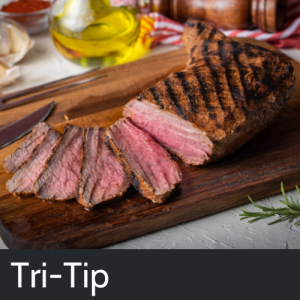
What’s the Perfect Meat Cooking Temperature? We all know that everyone has their own preferences when talking about meat.
If you are cooking for others you will most likely get special requests and you should be ready to take them!
Learning to control your temperature is essential. You need to find the right balance between killing all the bacterias and preserving as much flavor as possible. We at The SundayGrill know that cooking meat at the perfect doneness is always the ultimate pitmaster’s goal. So to help you with this, we have created a Meat Cooking Temperature Chart for you.
Meat Cooking Temperature Chart
| Level of doneness | Internal Temperature | What to look for? |
|---|---|---|
| Rare | 125°F | Cool Red Center |
| Medium Rare | 135°F | Warm Red Center |
| Medium | 145°F | Warm Pink Center |
| Medium Well | 150°F | Slightly Pink Center |
| Well | 160°F | Little or no Pink |
Make sure to insert the thermometer in the thickest part of the meat and avoid touching a bone of fat when checking the meat cooking temperature.
You might wonder why we don’t have time here. Your cooking time for reaching your wanted temperature will depend on many variables; like the weight or if your meat it’s frozen or not. You have to be quick on checking those temperatures to avoid overcooking, we recommend using a meat thermometer for that purpose.
Something that you need to consider is carryover cooking. Once you remove your meat from the heat it will continue to cook for another 3 to 5 minutes. There is a scientific explanation for this. But, to keep it simple, the outside of the meat it’s hotter than the center. So the meat will regulate its temperature sending some of the outside heat to the center. This means that you have to add a couple of degrees to the temperature your thermometer is giving you.
The Okay Method
Another way of knowing if your meat is ready when you don’t have a way of checking your internal meat cooking temperature is by using the Okay Method. Is not as accurate as using a thermometer but will do the trick if you don’t have one handy.
- Form the okay sign with your hand bringing your thumb and index together.
- With your free hand, press the fleshy part in the base of the thumb. That’s how rare meat should feel.
- Start switching fingers until you reach the pinky. You should be able to identify rare, medium rare, medium well, and well going from the index to the picky.
- Match that feeling to your meat and you should be able to achieve the level of doneness you are looking for.
Safe Minimum Cooking Temperatures Chart
In addition to our meat cooking temperature chart, here are the official USDA recommended cooking temperatures for other types of food. Always make sure to cook your food well before eating it.
| Product | Minimum Internal Temperature & Rest Time |
|---|---|
| Beef, Pork, Veal & Lamb Steaks, chops, roasts | 145 °F (62.8 °C) and allow to rest for at least 3 minutes |
| Ground Meats | 160 °F (71.1 °C) |
| Ground Poultry | 165 °F (73.9 °C) |
| Ham, fresh or smoked (uncooked) | 145 °F (62.8 °C) and allow to rest for at least 3 minutes |
| Fully Cooked Ham (to reheat) | Reheat cooked hams packaged in USDA-inspected plants to 140 °F (60 °C) and all others to 165 °F (73.9 °C). |
| All Poultry (breasts, whole bird, legs, thighs, wings, ground poultry, giblets, and stuffing) | 165 °F (73.9 °C) |
| Eggs | 160 °F (71.1 °C) |
| Fish & Shellfish | 145 °F (62.8 °C) |
| Leftovers | 165 °F (73.9 °C) |
| Casseroles | 165 °F (73.9 °C) |
What’s Your perfect Temperature?
If you follow our meat cooking temperature chart you will be able to achieve different levels of doneness as long as you keep an eye on your temperatures.
There is no way for anyone to tell you what’s the correct way to eat your meat, it’s just a matter of preferences. Our advice is to give them all a try and find your perfect level of doneness.
Once you have found your perfect temperature, make sure to check our recipes and make them your own! You can start by learning how to make bacon!







